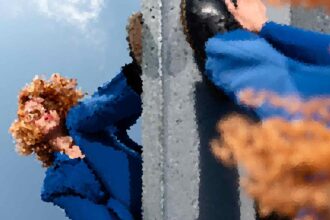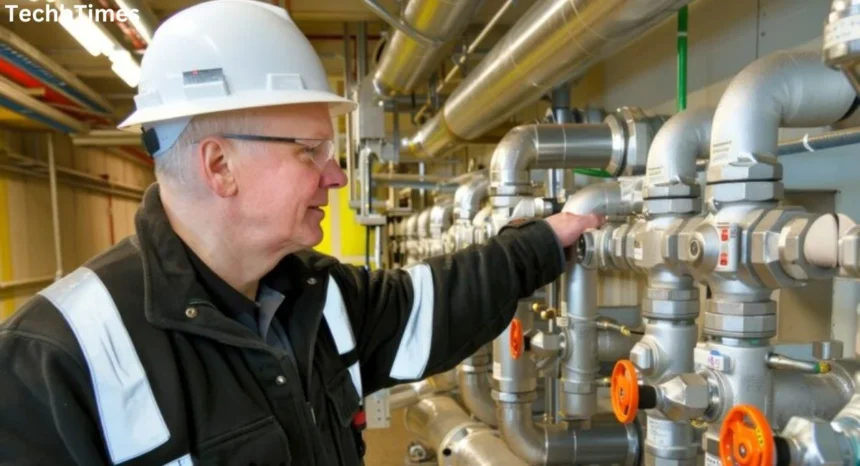When it comes to medical tests, many people might find themselves overwhelmed by the jargon and complexity involved. Among these tests, the MR Gas Cart Lav Test stands out as a vital tool in diagnosing various conditions. But what exactly does this test entail? Understanding its purpose and functionality can significantly impact patient care and outcomes. Whether you’re a healthcare professional or simply curious about medical procedures, delving into the intricacies of the MR Gas Cart Lav Test will shed light on why it’s indispensable in today’s medical landscape. Let’s explore this fascinating topic together!
What is the MR Gas Cart Lav Test?
The MR Gas Cart Lav Test is a diagnostic procedure used primarily in medical settings to evaluate the functionality of gas systems associated with MRI machines. It ensures that everything operates correctly and safely.
During this test, specialized equipment measures various parameters within the gas cart system. This includes checking for leaks, pressure levels, and ensuring that gases are delivered at appropriate concentrations.
By maintaining optimal conditions, healthcare providers can enhance patient safety during imaging procedures. The test also helps prevent equipment malfunctions, which could pose risks to both patients and staff.
Understanding how this test works is crucial for those involved in radiology and patient care. It underscores the importance of routine maintenance in complex medical environments where precision is key.
Importance of MR Gas Cart Lav Test in the Medical Field
The MR Gas Cart Lav Test plays a crucial role in the medical field, particularly in assessing and ensuring patient safety during MR procedures. By evaluating gas delivery systems used in anesthesia, this test helps identify potential failures that could compromise patient care.
Accurate assessments are vital for any healthcare facility. The results of this test guide maintenance protocols, ensuring that equipment meets stringent health standards. Regular testing fosters confidence among medical professionals and patients alike.
Furthermore, the MR Gas Cart Lav Test contributes to advancements in technology within anesthetic practices. As hospitals adopt newer systems, understanding their functionality through reliable testing becomes even more essential.
In an ever-evolving medical landscape, prioritizing such tests not only safeguards lives but also enhances overall treatment outcomes. This commitment to excellence reflects the industry’s dedication to providing optimal care at all times.
How Does the Test Work?
The MR Gas Cart Lav Test operates through a specialized process designed to assess the efficacy of medical gas delivery systems. It involves using a gas cart, which is equipped with various testing devices.
During the test, technicians connect the gas cart to existing pipelines or equipment. This connection enables them to monitor pressure and flow rates accurately.
Next, they introduce different gases into the system under controlled conditions. The data collected helps identify any leaks or inconsistencies in performance.
Advanced sensors provide real-time feedback on how well the system functions during these tests. Technicians analyze this information to ensure that everything meets safety standards for patient care.
This meticulous approach ensures that healthcare facilities can deliver gases safely and efficiently, ultimately protecting patients’ health during critical treatments.
Steps to Prepare for an MR Gas Cart Lav Test
Preparing for an MR Gas Cart Lav Test requires some essential steps to ensure accurate results. First, consult your healthcare provider for specific instructions tailored to your situation.
Next, you’ll likely need to refrain from eating or drinking prior to the test. Fasting may be necessary for several hours beforehand. This helps in obtaining clearer images and reducing potential complications.
Additionally, inform your medical team about any medications you’re taking. Some drugs can interfere with the test results.
Wear comfortable clothing without metal zippers or buttons since these could affect imaging quality.
It’s also wise to arrange transportation if sedation is involved during the procedure, as you might feel drowsy afterward. Being well-prepared can significantly enhance your experience and outcomes during the MR Gas Cart Lav Test.
Potential Risks and Benefits of the Test
The MR Gas Cart Lav Test offers several benefits, primarily in diagnosing and managing medical conditions. It provides crucial insights into a patient’s health status, allowing for informed treatment decisions. Many healthcare providers rely on it for its accuracy and efficiency.
However, like any test, there are potential risks involved. Some patients may experience discomfort during the procedure or have reactions to substances used in the test. While these instances are rare, they warrant consideration.
Another factor is the stress that comes with testing procedures. Anxiety about results can be significant for many individuals. It’s essential to discuss any concerns with your healthcare provider beforehand.
Understanding both sides helps patients make informed choices regarding their healthcare journey. Weighing these risks against the benefits is vital when considering undergoing an MR Gas Cart Lav Test.
Interpreting Results and Follow-Up Procedures
Interpreting the results of an MR gas cart lav test requires careful attention. Medical professionals analyze the data to determine if there are any abnormalities in the gas levels or flow rates. Such insights can reveal underlying issues with ventilation or respiratory function.
Once results are reviewed, follow-up procedures may vary based on findings. If normal values are observed, patients might simply receive reassurance and general advice on maintaining lung health.
However, if irregularities appear, further testing may be necessary. This could involve additional imaging studies or referrals to specialists for a more comprehensive evaluation.
Communication between healthcare providers and patients is crucial during this process. Patients should feel empowered to ask questions and discuss concerns regarding their results and next steps. Each case is unique, so personalized care remains essential throughout the journey ahead.
Conclusion
The MR gas cart lav test plays a critical role in modern medical diagnostics. Its effectiveness stems from its ability to ensure the safety and efficacy of MRI machines.
Patients can feel empowered by understanding what this test entails. Knowledge about procedure steps, potential risks, and benefits fosters confidence during the testing process.
Healthcare professionals rely on accurate results for informed decision-making. This collaborative approach enhances patient care and improves outcomes.
Staying informed is essential as advancements continue to emerge in medical technology. Engaging with healthcare providers about any concerns or questions ensures clarity throughout the testing experience.
Every detail matters when it comes to health. The MR gas cart lav test exemplifies how thorough assessments contribute significantly to overall well-being.
FAQs
Q: What is the MR Gas Cart Lav Test?
A: The MR Gas Cart Lav Test is a specialized evaluation used in medical settings. It assesses the functionality of gas carts, which are essential for delivering anesthetic gases during surgeries.
Q: Why is the MR Gas Cart Lav Test important?
A: This test ensures that equipment performs safely and efficiently. Proper functioning reduces risks associated with anesthesia, making it crucial for patient safety.
Q: How long does the test take?
A: Typically, the duration varies based on facility protocols but may last from 30 minutes to an hour.
Q: Are there any preparations needed before taking this test?
A: Yes, patients usually don’t need special preparations. However, it’s wise to consult healthcare providers for specific instructions relevant to individual cases.
Q: What should I expect after undergoing this test?
A: After receiving results, your healthcare team will discuss findings and recommend any necessary follow-up actions or additional testing if required.
Q: Is there any pain involved in the MR Gas Cart Lav Test?
A: No discomfort or pain occurs during this assessment as it primarily involves checking equipment functionality rather than direct interaction with patients.
If you have more questions about the MR gas cart lav test or how it impacts your care process, don’t hesitate to reach out to your medical provider. Your health and understanding matter!











